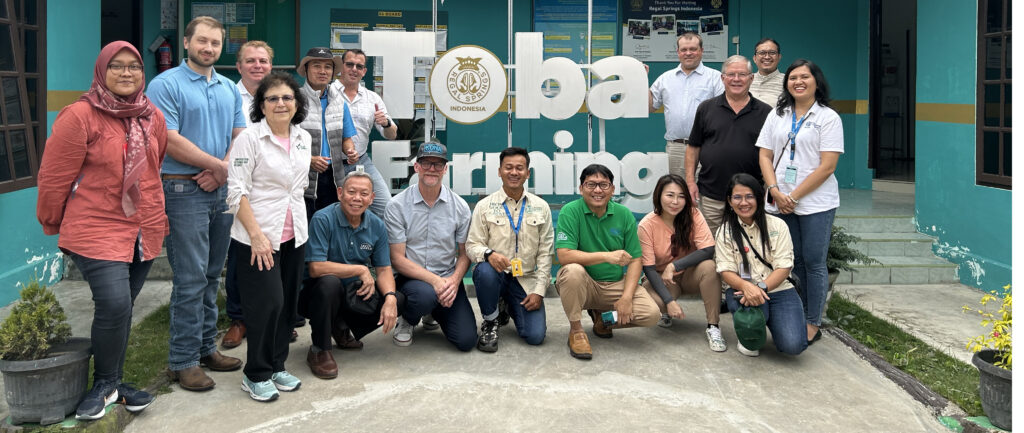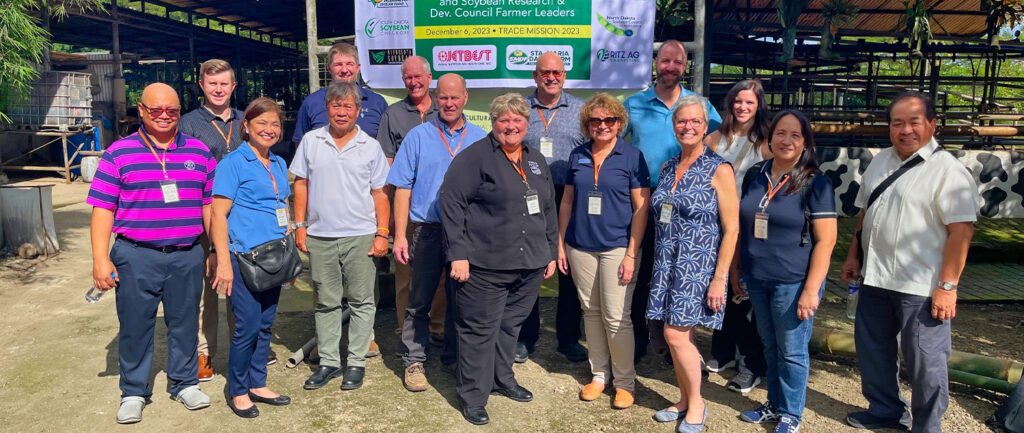Sometimes, old habits die hard.
In the soybean industry, one of the habits that Northern Soy Marketing (NSM) is aiming to change is basing soybean and soybean meal (SBM) purchases solely on crude protein. An NSM delegation went to Vietnam Jan. 6-13, 2024, to continue working toward its goal of making critical amino acid value, measured by near-infrared spectroscopy (NIR), the industry standard for assessing protein quality.
“Before I get too old, I would love to see the day that soybean meal is bought and sold based on NIR analysis,” said Bob Swick, a poultry nutrition consultant who joined NSM in Vietnam. “Eventually, I hope people find value based on the digestible amino acids, not just protein, fat and fiber. And the quality of the soybean meal starts with the whole bean.”
As a founding member of NSM, the Minnesota Soybean Research & Promotion Council (MSR&PC) has invested soybean checkoff dollars to expand the market in Southeast Asia for northern-grown soybeans, especially those leaving the U.S. from Pacific Northwest ports. Joining the mission to Vietnam was MSR&PC Director and NSM Chair Patrick O’Leary.
“The five state soybean checkoff boards that comprise NSM – Minnesota, North Dakota, South Dakota, Nebraska and Wisconsin – produce roughly 25-28 percent of the total soy production in the U.S.,” said O’Leary, who farms in Benson. “Though our beans may have slightly lower crude protein content compared to other countries, they have a better amino acid profile and low foreign material. They’re some of the best quality soybeans in the world.”

Nebraska farmer and NSM Director Eugene Goering and University of Minnesota Researcher Seth Naeve were also part of the delegation. The group visited Dabaco, which specializes in animal feed, poultry breeding and food processing, as well as Vinh Hoan/Feed One, an aquaculture company. Along with explaining the highlights from his 2023 U.S. Annual Soy Quality Report, Naeve described problems with using crude protein as the standard measure of quality.
“Traditional grading systems have been utilized for more than 100 years,” Naeve said. “The first researchers measured a lot of different plant tissues and determined that the average nitrogen composition of those proteins were around 16 percent. … We’ve imposed this on everything and have this universal measure. For better or for worse, we have adopted the current term crude protein because it’s not a perfect measure of protein but an indirect measure.”
Purchasing based on critical amino acid value rather than crude protein wasn’t the only prevalent message during NSM’s meetings and “Understanding U.S. Soy Quality Seminar,” which was held in both Hanoi and Ho Chi Minh City.
“In the U.S., we have a very strong demand for soybean oil, driven by the renewable fuel and sustainable aviation fuel industry,” O’Leary said. “So, we are going to have an increased supply of soybean meal, and we’ll need to double our soybean meal export market. Meaning, high quality U.S. soybean meal will be available at competitive prices.”
As O’Leary and the group wrap up their meetings in Vietnam, NSM will continue to refine their messaging and paint a more accurate picture of soybean protein quality to international producers, buyers and nutritionists.







